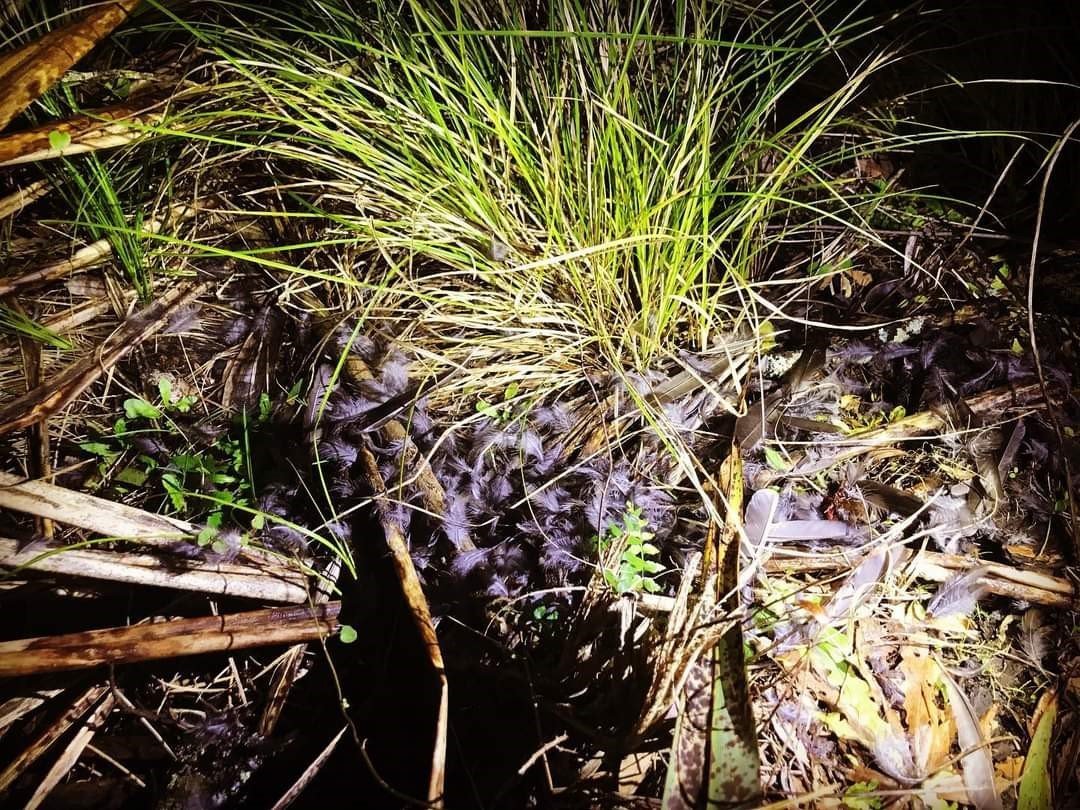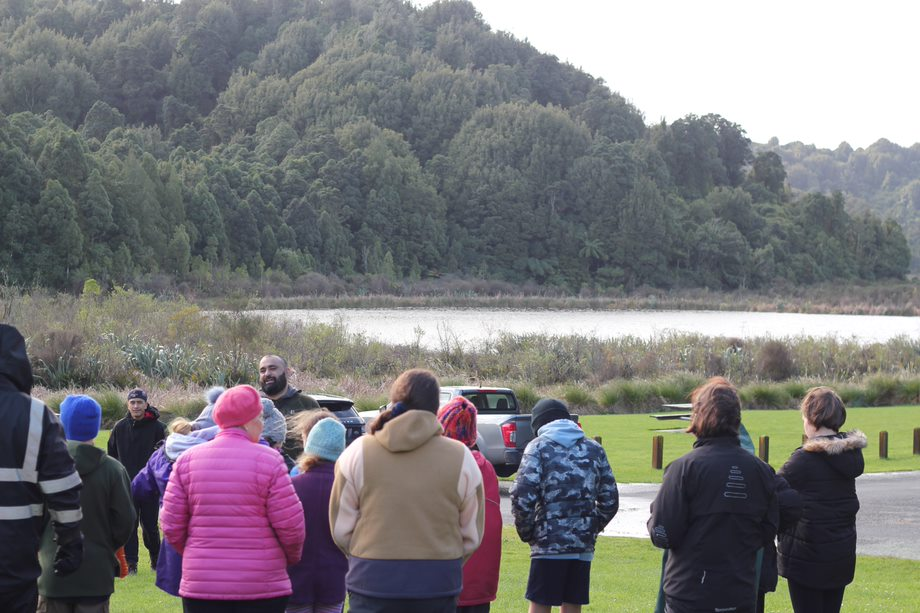Ruru offers unexpected life lessons at Rotokare
Someone gate-crashed the ‘Kiwi’ project at the Te Ara Taiao o Kaitake hikoi to Rotokare to learn about the kiwi kohanga (nursery) and juvenile Kiwi journey to the Kaitake Ranges.
Eighteen year 6,7, and 8, students from across the three schools and hapū (Coastal Taranaki, Ōmata and Ōākura Primary Schools, and Hapū, Ngā Mahanga ā Tairi) have formed a ‘Student Leadership Group’ and have taken the opportunity to visit and learn from the talented environmental educators at Rotokare Trust alongside Ngāti Ruanui Hapū; Ngāti Tupaea, at the Rotokare Scenic Reserve - a fully fenced, predator free sanctuary and Kiwi Kōhanga (nursery) – the only one of its kind in Taranaki.
Picture: All that was left of the Ruru kai (meal) Ruru traditional diet includes, wētā, beetles, insects, spiders and moths, with occasional mice, kiore, lizards and birds- with no mice or rats at Rotokare maybe manu are easier to prey upon for Ruru?
The day was organised for these Tamariki to do a number of planned activities whilst there, like learning about where the Kiwi, that now live on the Kaitake ranges, spent their juvenile years, learning about predators in the onsite kura, undertaking a night walk into the Ngahere (bush) to hear Kiwi calling and hearing korero tuku Iho about the cultural history of the Eltham rohe from Tāne Houston of Ngāti Tupaea Hapū, who noted the Ruru was a tohu (sign) for his hapū, symbolising wisdom and seeking of knowledge.
Assembling in the carpark in readiness to go into the ngahere at night the tamariki leaders and support adults were listening to the health and safety briefing, including learning about the ‘red light’ torches that can be used to see what manu (birds) are doing at night in a safe manner for the manu. The student leaders were asked not to use their normal headlamp torches to look at any manu that were out and about.
So, there they are, ready to venture into the ngahere (bush), next minute a loud whooshing sound and shrieking took place along with the visuals of a large manu flying across in front of the group.
Picture: Shows Matua Tane Houston of Ngāti Tupaea Hapū korero tuku iho (outlining some of the cultural history of Eltham and Rotokare to adults and tamariki)
What the group witnessed was a Ruru (native owl) swooping out of the Ngahere, capturing and killing another manu mid-flight, then landing on the ground with its kill. They shone the red light on the Ruru - whom by all accounts was still experiencing the thrill of the kill, quickly deciding that it should be left to eat its kai in peace.
Inspecting the site on return from their walk, all that was left of the meal was some feathers and an orange beak, the Rotokare educators suspect the Ruru kai that night was a minor or black bird. In any case the symbolism of ‘wisdom and knowledge seeking’ was certainly reinforced by the Ruru that night!


